In 2019 Fondazione Prada hosted Sanguine, the exhibition curated by Luc Tuymans, in which contemporary and 17th century artists engaged in a conversation that interpreted the present from a Baroque perspective: between disgust and wonder, terror and ecstasy. Today, five years later and within an irremediably different context, Museion and curator Leonie Radine interpret the present in the instances of Renaissace. Fifteen young artists working in South Tyrol and Milan have been selected by the Vordemberge-Gildewart Foundation to receive one of the highest grants for young European artists. The exhibition design is by (ab)Normal studio. Just as classical Greek culture influenced the values of Renaissance man and gave birth to modern humanity, the works on show at Museion also deal with the past, tradition and cultural heritage.

Costanza Candeloro, exhibition view “Renaissance”, 2024, Museion. Photo: Luca Guadagnini
Young artists are taking responsibility for the ongoing shift in paradigms of social representation. AliPaloma poses as a “thorn in the side of the patriarchy” in the work Resist (2024), in the shape of a boa as a metaphor for a queer and feminist struggle that does not sink. Costanza Candeloro deconstructs the language of make-up tutorials in Lolita Turn 67 (2022), as an emancipation from a traditional representation of idealised beauty. Filippo Contatore‘s work, Forge Activation (2024), undertakes a critical analysis of the Western construction of gender roles through the direct experience of a “muscular” craft such as blacksmithing.
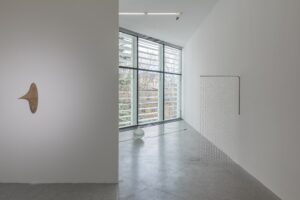
AliPaloma, exhibition view “Renaissance”, 2024, Museion. Photo: Luca Guadagnini
The exhibition is a field for studying the behaviour of the emerging generation in relation to intangible heritage: since 2021, Monia Ben Hamouda has been creating “aniconic figures”, sculptural calligraphies that oscillate between respect and transgression of tradition. She shares a visceral sense of ritual with Sophie Lazari, who explores the Salento myth of the tarantula, where music becomes a cure for the hysteria caused by the tarantula’s bite. Magdalena Mittelhofer, on the other hand, narrates an intergenerational discourse that critically examines the renewed values of the protagonists in contrast to patriarchal ideologies.
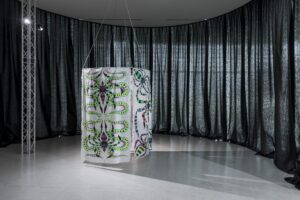
Sophie Lazari, exhibition view “Renaissance”, 2024, Museion. Photo: Luca Guadagnini
For artists, images are a source and a powerful means of expression, through which a fluid identity is constructed and examined, as in the case of Luca Piscopo, and from which visual stories between documentation and fiction are born, as in the works of Jim C. Nedd. From the weight of reality we move to a contemporary surrealism in Giorgia Garzilli‘s paintings, strongly influenced by pop culture and the Hollywood film industry, which have produced representation models reiterated by endless cycles of mimesis. Capitalism and consumerism are taken as a counterpoint by Lorenza Longhi, who ironises on the obsolescence of advertising language, questioning an alleged state of well-being reiterated by the culture of images and products.
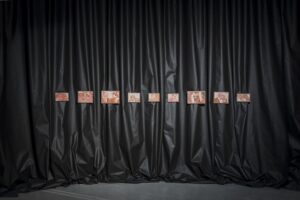
Giorgia Garzilli, exhibition view “Renaissance”, 2024, Museion. Photo: Luca Guadagnini
Curator Leonie Radine emphasises how Renaissance emerges from an active critical practice and a circular understanding of time, which is expressed in the artists’ regenerative approach to the past. Arte Povera is certainly one of the matrices that has impact on attitude of many of them. Binta Diaw and Tobias Tavella work closely with the territory, producing devices that tell the story migrant community’s reality and of interaction between art and nature. Isabella Costabile and Raphael Pohl use discarded, abandoned or borrowed objects to create a meditation on the value of things in relation to time, economic systems and a culturally fluid expression. The remnants of the creative industry are the material with which Davide Stucchi creates his works, developing a personal language from the formal principles of Arte Povera.
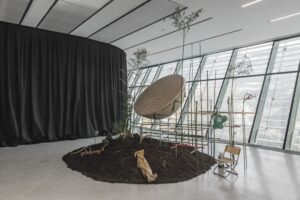
Tobias Tavella, exhibition view “Renaissance”, 2024, Museion. Photo: Luca Guadagnini
Stucchi is also designing the set for the exhibition The Weight of Concrete by Ezio Gribaudo (1929-2022), a transdisciplinary publisher and artist capable of creating a personal grammar from the fusion of form, language and material, expressed above all in the Logogrifi. The exhibition, curated by Tom Engels and Lilou Vidal in collaboration with Leonie Radine, highlights Gribaudo’s transdisciplinary and regenerative work and includes a sound programme to open up an intermediate perspective between poetry and visual art. The title refers to the book Il Peso del Concreto (1968), with early graphic works by Gribaudo and poems by Adriano Spatola, wich will be republished by Axis Axis and Grazer Kunstverein in summer 2024.
The exhibitions presented by Museion challenge each other and offer the opportunity to take a closer look at innovative research and a stimulating conversation between generations.
Angelica Lucia Raho
Info:
AA.VV., Renaissance
curated by Leonie Radine
Ezio Gribaudo. The Weight of the Concrete
curated by Tom Engels and Lilou Vidal in collaboration with Leonie Radine
23.03.2024 – 01.09.2024
Museion
Piazza Piero Siena, 1, Bolzano
www.museion.it
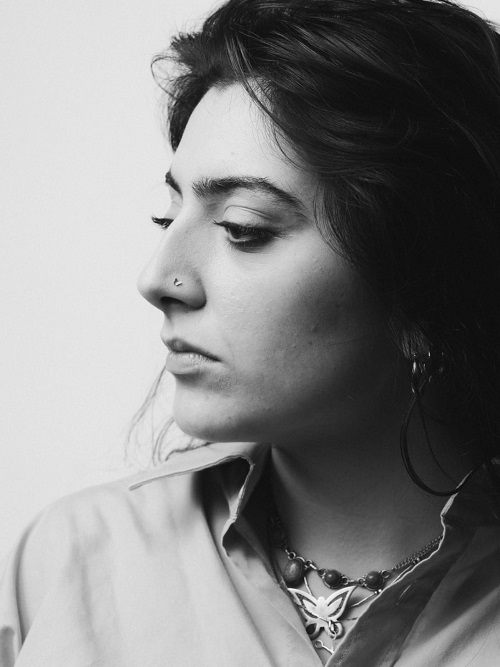
Lecce, 1999. After a three-year degree in Communication and Art Teaching and a two-year specialist course in Visual Cultures and curatorial practices at the Brera Academy of Fine Arts, she collaborates with art magazines and with independent curatorial projects between Lecce and Milan.






NO COMMENT